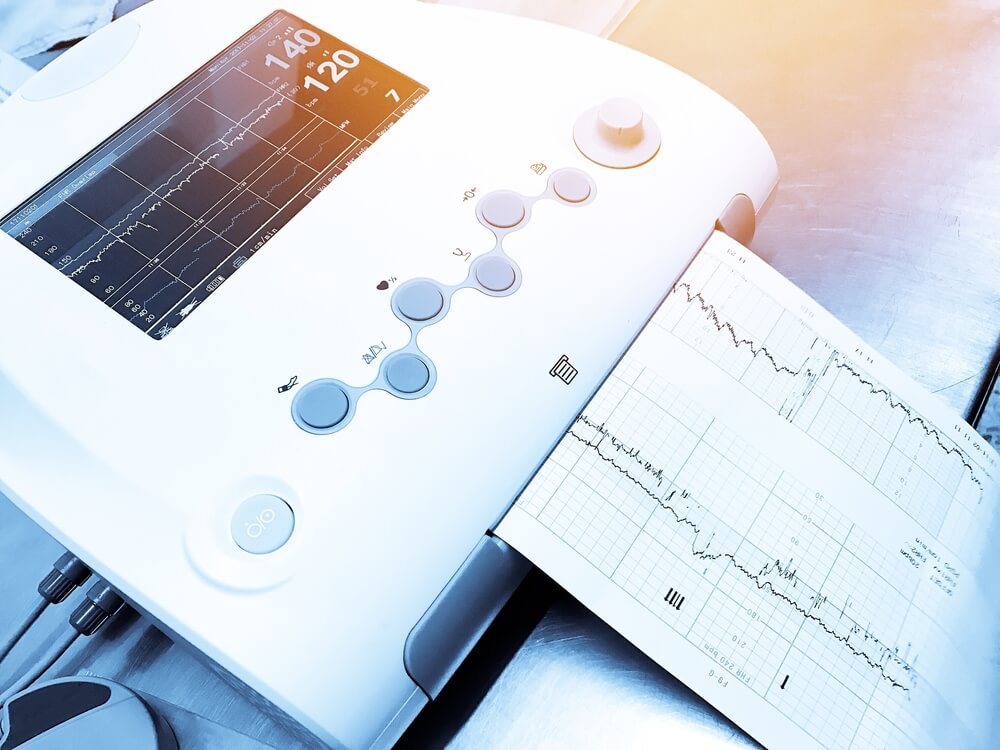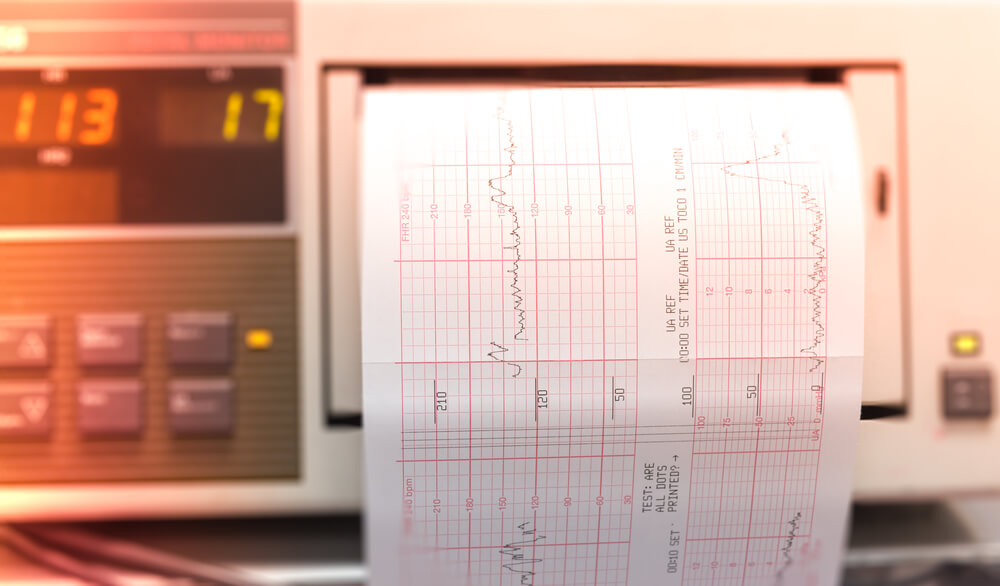Fetal heart rate monitoring or simply fetal monitoring is a technique used in medicine to monitor the fetus’s heart rate and development rhythm during pregnancy. This technique usually involves putting a fetal heart rate monitor on the mother’s stomach to observe the fetal heart rate and show it on a display.
This test is most often done during the late stage of pregnancy and during labor. The typical fetal heart rate ranges between 110 and 160 beats per minute; the variations can include 5 to 25 beats per minute. The uterine environment can affect the heart rate results, which can change depending on the in-utero conditions.
When the results of the fetal monitoring are seen as abnormal, the baby is lacking oxygen or facing some other issues. Whatever the case might be, you need to consult your chosen medical provider immediately to start working on resolving the problems and normalizing the fetal heart rate as soon as possible.
There are two main types of fetal heart rate monitoring, internal and external, which will be elaborated on in more detail later in the article.
As mentioned, any type of irregularity in this test results means you have to consult your doctor and work on resolving the issue. This means that your chosen medical professional needs to be an experienced expert who is knowledgeable enough to help you in addressing the problem. There are different clinics offering guidance and support, such as ACE OBGYN, where the team is experienced and ready to help you with this particular situation.
Types of Fetal Heart Monitoring

As previously noted, there are two ways to monitor the fetal heart rate, i.e., the external and the internal method.
External fetal monitoring is when the doctor uses a device to listen to the baby’s heartbeat via the mother’s abdomen. Ultrasound technology is used in this method. It is a non-invasive approach used most often during labor and delivery to monitor the baby’s health.
One of the most popular types of monitors is the Doppler ultrasound device, where the transducer or the probe is fastened to the mother’s stomach, and in that way, the heartbeat sounds are directly sent to the computer screen. The screen shows the fetal heart rate and pattern, and the results are printed on a piece of paper. The Doppler ultrasound is used because it includes very low to no risks to the safety of the mother and the baby.
When it comes to preparation and the exam itself, here is some information and a few tips, so you can feel more confident and relaxed:
- The monitoring can take place in the doctor’s office or as part of your hospital visit or stay.
- The doctor will explain the process to you step by step, and you can ask any questions you want.
- Sometimes patients sign a consent form, which allows the doctors to perform the procedure.
- It is crucial that you share information about any allergies you might suffer from, such as medicines, anesthesia, latex, etc., with your doctor.
- If you are doing an internal FHM, your cervix must be dilated so that the device can be inserted.
- Sometimes, depending on the type of monitoring test, you will be asked to eat a meal before the exam so the baby becomes more active.
- When you come to the exam, you might be asked to take off your clothes from the waist down or remove all of your clothes and wear a hospital gown.
- You may be asked to lie on your back on the examination table.
- The doctors use a clear gel, and place it on the abdomen.
- The transducer gets pressed on the skin, and the medical professional will move it around until they find the fetal heartbeat.
- You will also hear the sound of the beat during this exam.
- The heartbeat is recorded and displayed on a screen that you can most often see.
- After you are done, the doctor will clean the gel of your stomach, and if this is only an exam rather than labor and delivery, you will be free to go home.
Internal fetal monitoring is a method where thin wires i.e. electrodes are put on the baby’s head to monitor the heartbeat. The wires connected to a monitor are placed through the mother’s cervix, and this method is seen as more accurate because no external factors, such as movement, interfere with the results.
The issue with the internal monitoring approach is that it cannot be done if the amniotic sac is not broken and if the cervix is not sufficiently open. Most often, this approach is used during labor so that the doctor can monitor the baby more closely. In these situations, the doctor observes the contractions in the uterus and the baby’s heartbeat and compares the results.
The exam itself is a bit different from external fetal monitoring, and here is some basic information:
- The patient removes all their clothes and wears a hospital gown.
- They lay on the labor bed and lift their legs as they do during a pelvic exam.
- A vaginal examination is performed to check how much the patient is dilated.
- Sometimes, if the amniotic sac is not broken, the doctor opens it with medical tools.
- If the baby’s position is typical, then the doctor feels the head of the baby with their hand and inserts the catheter in the vagina, through which a small wire is placed directly on the baby’s head.
- The wire is connected to the monitor, and it is taken off after the baby is born, so the patient will not be able to move from the bed until they deliver the baby.
Electronic Fetal Monitoring

EFM, or electronic fetal monitoring, is another way of tracking the baby’s heartbeat before or during labor and delivery. This approach is often recommended only in high-risk pregnancies because EFM increases the risks of cesarean sections and other complications such as neurologic injuries, cerebral palsy, etc. On the other hand, if the mother is suffering from preeclampsia, diabetes, bleeding during pregnancy, etc., this approach is advised. EFM can also help with distinguishing if the labor is true or false.
There are external and internal electronic fetal monitoring, where the internal is actually similar to the method described above, while external electronic fetal monitoring includes elastic strips instead of a transducer.
We Are Here!
In the article above, you can find some basic information on tracking your future baby’s heartbeat and overall health. This examination is most often stressful for mothers, but our expert team has plenty of experience to offer informed support and guidance. Contact us and schedule an appointment, so you and your baby can continue to be safe and healthy. We are here for you, so call us!

